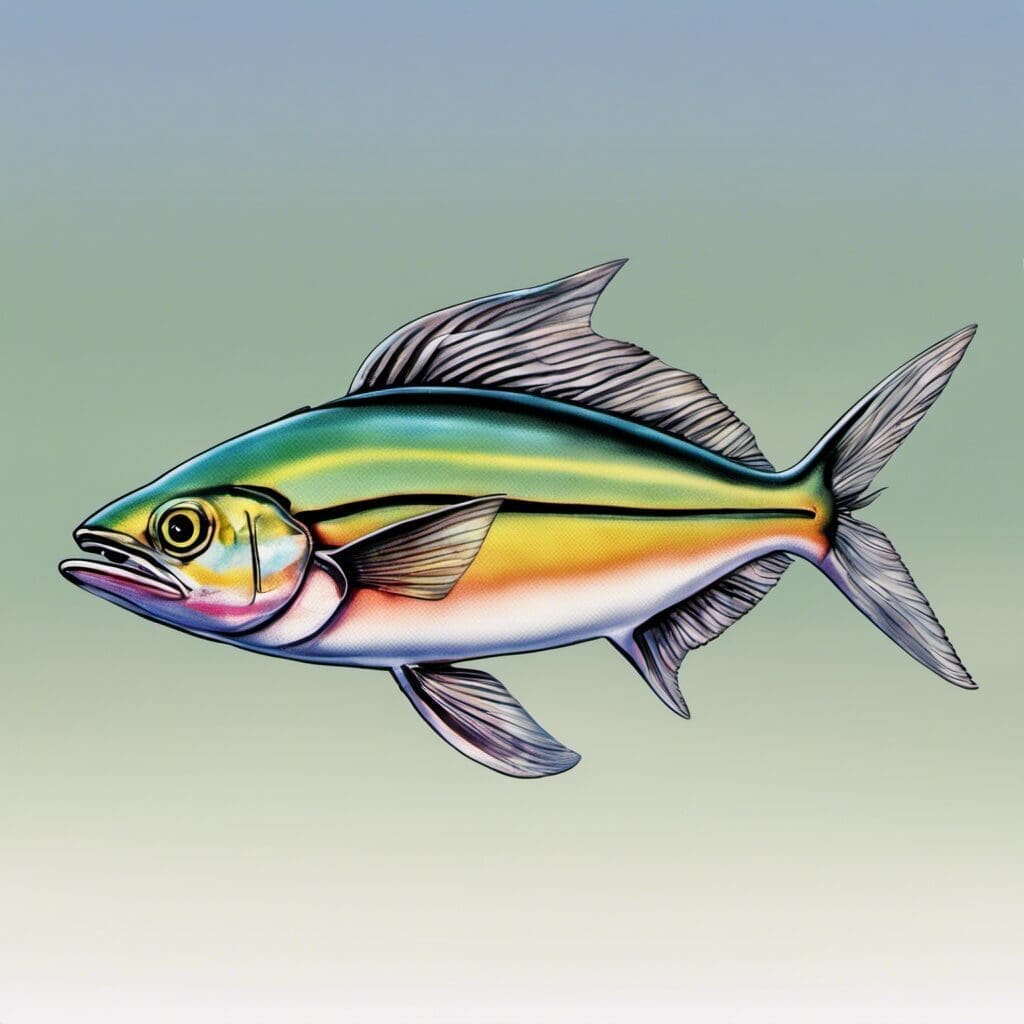Introduction
Commonly known as the Rainbow Runner, the Elagatis bipinnulatus is a vibrant and darting species that belongs to the Carangidae family.
Conservation Status
According to the International Union for Conservation of Nature (IUCN), the Rainbow Runner is currently categorised under the status of ‘Least Concern’. As a wide-ranging species, it’s not subjected to any targeted fisheries and, as such, exhibits high resilience to fishing pressure.
Statistics
| Length | Average: 60 cm | Range: 50-120 cm |
|---|---|---|
| Weight | Average: 3 kg | Range: 1-5 kg |
| Average Lifespan | Up to 7 years in the wild | |
Distribution
The Rainbow Runner can be found in tropical and subtropical waters worldwide. They’ve been observed in regions spanning the Atlantic, Pacific, and Indian Oceans. These fish exhibit complex migration patterns due to their dependency on warm ocean currents.
Habitats
Rainbow Runners are pelagic fish. They inhabit predominantly the upper layers of coastal and oceanic waters, residing at depths of between 1 and 160 meters. They prefer warmer sea temperatures ranging from 24-28 degrees Celsius.
When and Where to See
Rainbow Runners are known to swim closer to coastal areas during warmer months. They are usually visible during the daytime, with a particular surge in activity in the early morning and late afternoon.
Best Fishing Locations
Top Locations
- The Bahamas
- Bermuda
- Florida Keys, United States
- Baja Peninsula, Mexico
- Andaman Sea, Thailand
- Great Barrier Reef, Australia
- Costa Rica’s Pacific Coast
- Seychelles Islands
- Hawaii, United States
- Mauritius
General Fishing Tips
Locate warm currents or areas with visible fish activity, as Rainbow Runners are typically found in schools near the surface of open waters.
How to Catch
The preferred bait for Rainbow Runners include small squids, cut baitfish, and shrimp. Popular techniques to capture this swift species include trolling and casting using light to medium tackle. The best season to fish Rainbow Runners is during the warmer summer months, particularly in the early morning or late afternoon.
Identification Guide
Rainbow Runners are easily identified by their slender, streamlined bodies and vibrant blue and silver coloration, punctuated by a yellowish strip that runs longitudinally. Their unique double dorsal fin and small scales further distinguish them from similar species.
Culinary
How to Cook
Rainbow Runners are best cooked grilled or steamed. The fish’s mild flavor and semi-firm texture take on marinades well. A popular method is marinating the fillets in citrus and herbs before grilling.
Taste Profile
Rainbow Runners have a mild, sweet flavor and a semi-firm, flaky texture.
Nutritional Information
Rainbow Runners are low in fat and high in proteins, offering a myriad of valuable nutrients such as Omega-3 fatty acids and several essential vitamins and minerals.
Additional Information
Behavior
Rainbow Runners are known for their rapid, vigorous swimming and commonly seen schooling with other species. Their diet primarily consists of squid, small fish, and planktonic crustaceans.
Predators and Threats
Natural predators of the Rainbow Runner include larger species of sharks and sea lions. The primary anthropogenic threat to these fish is unintentional capture in commercial fisheries targeting larger pelagic species.
References and Further Reading
To learn more about the Rainbow Runner, consider exploring the following texts:
- Froese, R. and Pauly, D. (eds). (2020). FishBase. World Wide Web electronic publication. www.fishbase.org
- “Sea Fishes of Southern Australia” by Barry Hutchins & Roger Swainston.

